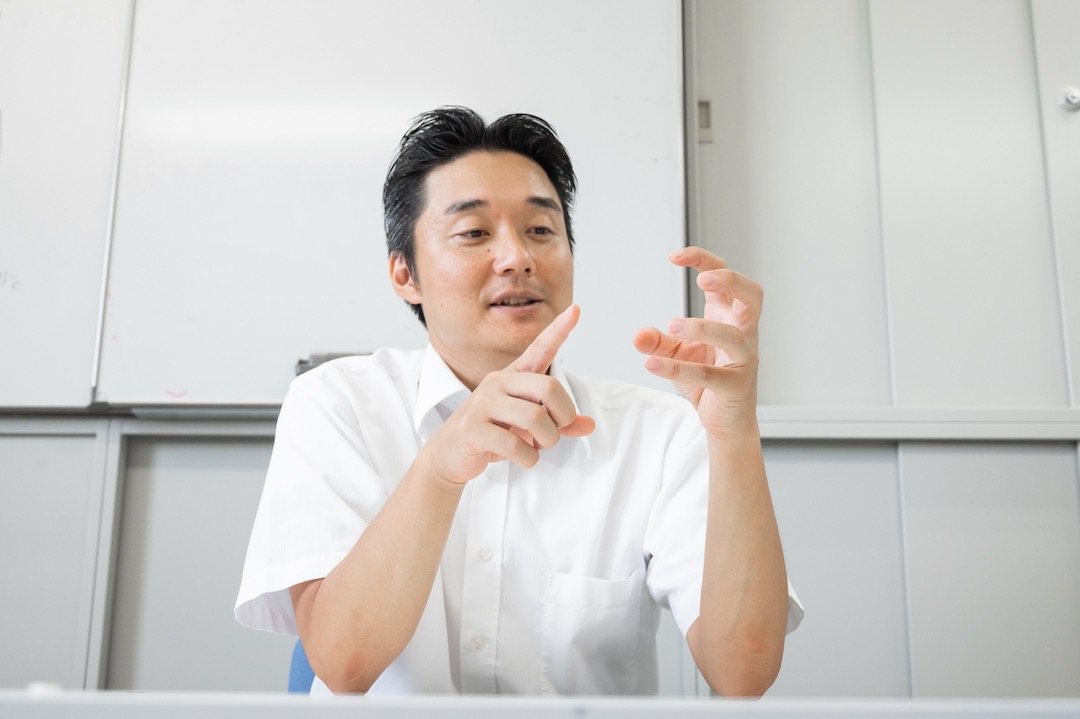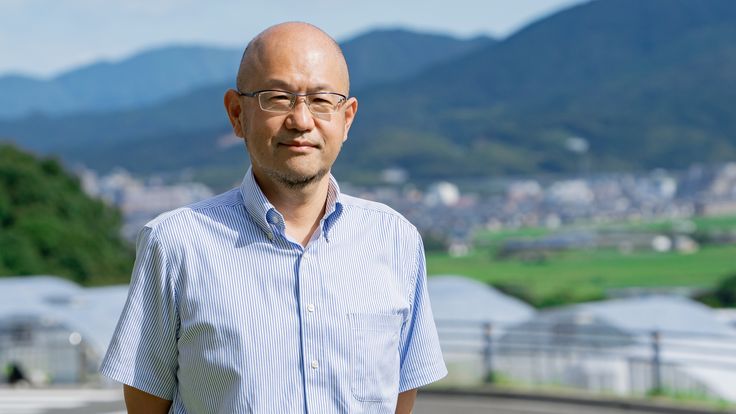Searching for the best, and right, interactions
with Prof. Yu Hoshino
What do antibodies, CO2 capture, enzymes, and dyes have in common? They are all part of Professor Yu Hoshino's world of applied chemistry.
"In my lab, there is no discernible difference in these topics. It's all about mimicking the incredible functions of proteins by artificially constructing and customizing bonds," states Hoshino glowingly.
Hoshino began his research career studying 'biomolecules,' molecules that are used in the biological processes of organisms, including everything from lipids and DNA to proteins.
Biomolecules have immense potential for medical applications, but they are expensive, potentially unstable, and tricky to use. It was for these reasons that Hoshino moved onto synthetic chemistry to find ways to artificially make compounds that mimic their functions.

"One example is artificial antibodies," Hoshino explains.
Antibodies are proteins that work like a signal flare for the body's immune system by attaching to a foreign infection source or cell and telling the body's immune cells to attack. Their use in cancer treatment has been revolutionary, essentially using your own immune system to fight cancer.
"However, since antibodies are biologically sourced, they are astronomically expensive. We are trying to make them cheaper by developing artificial antibodies using low-cost, commercially available polymers," explains Hoshino.
The researchers begin by studying the structure and binding process of an antibody, and then arrange the right polymers to mimic the binding conditions.
Continues Hoshino, "We are making headway developing artificial antibodies for treatment of certain cancers and sepsis."
In other work, Hoshino is applying molecular bonding to carbon capture technology for tackling climate change. He's doing this by developing filters that can capture CO2 from factory emissions, or even the air, for subsequent use.

"It's similar to how our blood works. Hemoglobin captures CO2 in our body that is then expelled out of our lungs. Any material we make must have strong bonds to store CO2, but they must be convertible to weak bonds to expel the gas," explains Hoshino. "The captured CO2 can be used in agriculture, methane synthesis, and even carbonizing your soda."
The material that they have been working on has an immense storage capacity: one liter of it can hold 20–30 times that amount of CO2. Better yet, the capacity is customizable.
"This allows our technology to be used in different industries, from a natural gas power plant that needs high capacity, fast storage, and high turnover to direct air capture that doesn't necessarily need high capacity or fast storage," Hoshino continues.
In 2020, he founded Japan Carbon Cycle Lab to bring the technology to market. The company has already established partnerships across Kyushu. You can even see one of their systems on Ito Campus, where it is pumping concentrated CO2 into a greenhouse to help crops grow.
Going carbon neutral is no easy task, but Hoshino believes that it is a realistic goal, and Kyushu University is the place to do it.
By manipulating strong and weak bonds, Hoshino’s lab is also developing artificial enzymes, opening new pathways of chemical synthesis.

"We can do this work thanks to Professor Hisashi Shimakoshi, an expert in catalyst chemistry and bio-inspired catalysts," states Hoshino. "Enzymes are tricky since they need to bond strongly to a compound, cause a reaction, and then release the product."
Together, they have developed an artificial vitamin B12 molecule that can be activated by sunlight. A complex molecule involved in critical processes including making DNA and maintaining the nervous system, B12 must be consumed from outside sources since the body cannot synthesize it.
They hope to further develop the technology for application to both organic and inorganic processes.
Finally, Hoshino is using chemistry to develop molecules that store, manipulate, and refract light.
"Similar to how polarized glasses work, molecules can bend or manipulate light depending on their structures. In collaboration with Associate Professor Toshikazu Ono, we’re developing dyes that produce different colors or refract light differently," explains Hoshino.
Though Hoshino's plate seems full, that does not stop him from looking for the next interesting molecule to work with.
"New protein structure information comes out daily, and I always enjoy looking for hints into developing new compounds with similar functions. It's all about finding the right interactions," concludes Hoshino.



































